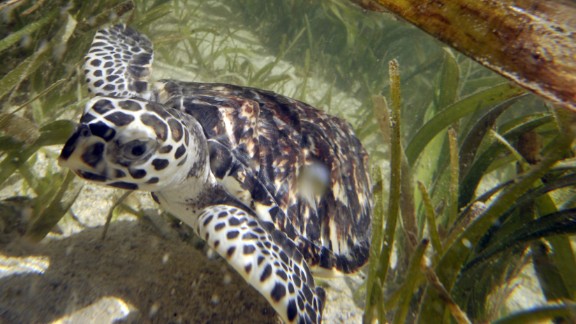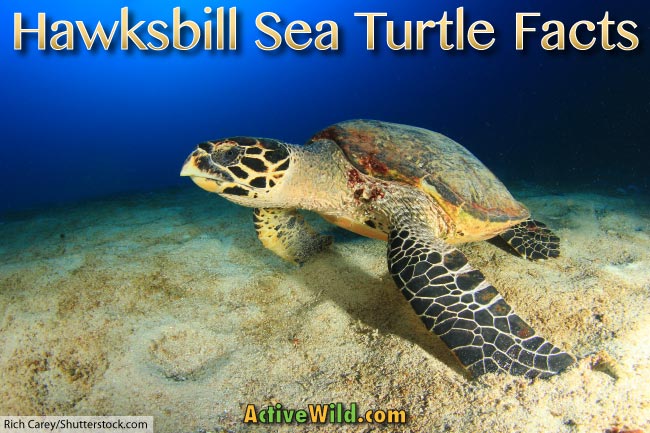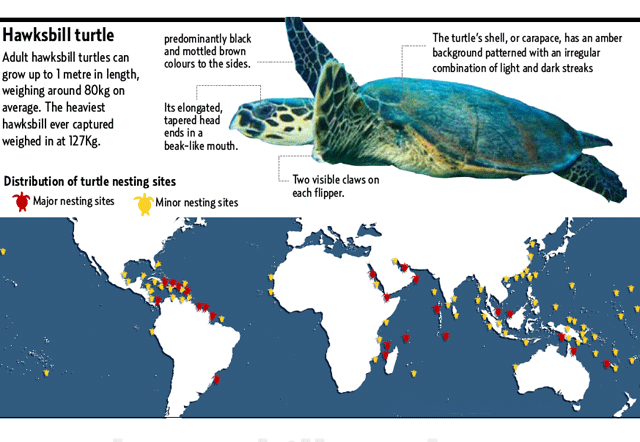

Hawksbill sea turtle (top right) in a 1904 plate by Ernst Haeckel The Convention on International Trade in Endangered Species (CITES) regulates the international trade of hawksbill sea turtles and products derived from them. Hawksbill shells were the primary source of tortoiseshell material used for decorative purposes.

The World Conservation Union, primarily as a result of human fishing practices, classifies E. While this turtle lives part of its life in the open ocean, it spends more time in shallow lagoons and coral reefs. Hawksbill shells slightly change colors, depending on water temperature. imbricata is easily distinguished from other sea turtles by its sharp, curving beak with prominent tomium, and the saw-like appearance of its shell margins. In general, it has a flattened body shape, a protective carapace, and flipper-like limbs, adapted for swimming in the open ocean. The appearance of the hawksbill is similar to that of other marine turtles. The species has a global distribution that is largely limited to tropical and subtropical marine and estuary ecosystems. It is the only extant species in the genus Eretmochelys. The hawksbill sea turtle ( Eretmochelys imbricata) is a critically endangered sea turtle belonging to the family Cheloniidae. Follow these simple precautions and honu 'ea might have a chance for a bright future in Hawai'i.Expert range map of the hawksbill sea turtle To discourage predators, always keep beaches clean of food scraps. Cover your flashlight lens with a red filter to minimize the bright white light and remember to direct the light beams away from the ocean.

Since fires and lights disorient nesting turtles and hatchlings, do not build campfires when camping at the beach during the nesting season. Your Actions Directly Impact Their Future On their last remote nesting beaches, artificial lights may attract and disorient nesting females and hatchlings, causing them to head away from the water where they become stranded and die. Loss of nesting habitat, predation and poaching have reduced honu'ea populations to critically low levels. As few as one in 1,000 honu 'ea hatchlings survive to adulthood. Once they reach the ocean, large fish and other sea creatures find them irresistible. Along the way to the sea, they face a variety of predatory crabs, rats, mongooses, cats, dogs and pigs. They find the ocean by crawling towards the brighter, open horizon. Hatchlings emerge under cover of darkness as the sand temperature begins to drop a few hours after sunset. After she deposits and covers an average of 180 eggs, she returns to the sea, leaving the eggs to incubate during the next two months. The female waits until night to crawl ashore and uses her hind flippers to dig a narrow egg chamber in the sand near vegetation. Of the few beaches they nest on statewide, three are protected along the remote coast in Hawai'i Volcanoes National Park. Males never come to shore and females only do so in order to nest. Called honu ʻea or ʻea by Hawaiians, they feed almost exclusively on sponges. Green sea turtles are common around the island, but our coastal waters also harbor its more elusive and rare cousin-the Hawaiian hawksbill turtle.


 0 kommentar(er)
0 kommentar(er)
